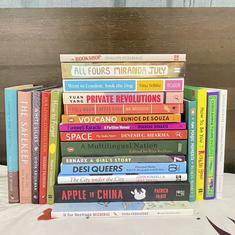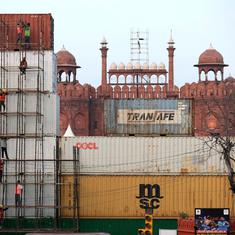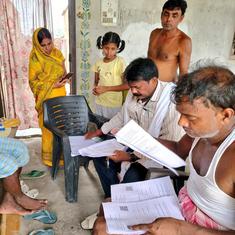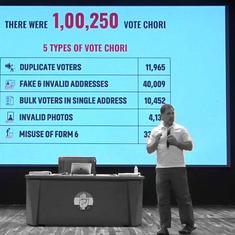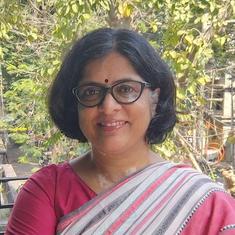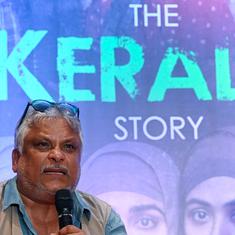To the south, socialism was also in the air, as Ceylon/Sri Lanka and India each turned to the left. Ceylon had made such turns at regular intervals in the past – about every five years as the governments switched at each election between left- and right-leaning coalitions. The former were led by the Sri Lanka Freedom Party (SLFP), which combined left-wing economic views with Sinhalese nationalism; as such they were often in power when sporadic if deadly violence erupted against the minority Tamil population. The SLFP’s rival was the United National Party (UNP), in contrast, favoured a more liberal, market-oriented economy. The political oscillations created whiplash for civil servants like Lal Jayawardena.
Jayawardena served in the UNP-led government in the late 1960s, landing in its Ministry of Planning and Economic Affairs after leaving the United Nations Conference on Trade and Development (UNCTAD) in 1966. The UNP, however, was agnostic (if not downright antagonistic) about the virtues of planning. Jayawardena aspired to grab their attention through the application of analytical planning techniques, especially those he had taken from his Cambridge teacher W. B. Reddaway. He had long fastened on Reddaway’s approach to planning, which amounted to an input-output table that tracked (for instance) not just how much iron a steel plant needed but also how much steel would be available for laying railway track. Reddaway had spent a year at the Indian Planning Commission trying to put his model to work, but his final report on that exercise reeked of failure; it concluded not with model outputs or economic advice – only a plea to assemble better data.
Jayawardena was undeterred by Reddaway’s failure in India. Nor was he overly concerned by the limited mathematical training that he shared with his teacher. He carried Reddaway’s India book, heavily marked up and dog-eared, treating it as if it held profound truth of the ages; his staff expressed a similar enthusiasm, with one recalling that Reddaway’s book was “like a bible for us.”While Jayawardena was in no sense radical economically, his obsession with the Reddaway tables illustrates his desire to find a tool that could not just represent the economy abstractly but could use that representation to shape economic life.
One person’s bible, however, was another’s heresy. Jayawardena found little interest in Colombo for the sorts of economic planning to which he aspired in the late 1960s. As he and his team laboured to fill in Reddaway tables, a top party official tried to bypass any kind of planning process by inviting the noted liberal Indian economist BR Shenoy to Colombo. Shenoy evinced a sharp opposition to planning in India – perhaps unsurprising given his membership in the freemarketeer Mont Pelerin Society. He instead recommended deregulation, a “drastic” reduction of government spending (including even the sacrosanct food subsidies), devaluation, and privatisation of the public sector. UNP Prime Minister Dudley Senanayake favoured Shenoy’s proposals over Jayawardena’s. (Senanayake, who had taken over as prime minister for his father in the early 1950s, was at the helm when his cuts to food subsidies led to a protest that paralysed Colombo, and eventually to Senanayake’s resignation.)
Back in office in the late 1960s, DS Senanayake’s government faced a series of external shocks that overpowered any policy initiatives. A general decline in commodity prices hit the country’s main exports (tea, rubber, coconut), while prices for imported manufactured goods increased; as a result, the balance of payments deficit doubled in the three years after 1966. Meanwhile, higher prices for imported rice meant that food subsidies skyrocketed, spurring a sharp increase in budget deficits – 70 per cent in just a few years. UNP efforts to rein in the budget deficit by cutting the rice subsidy ultimately cost the party the 1970 election, which they lost to the Freedom Party under the leadership of Sirimavo Bandaranaike. Senanayake observed bitterly that it was the second time he lost his job by “disturbing the most cherished of the sacred cows: … the rice subsidy.”
Coming into office in 1970, the Sri Lanka Freedom Party pushed both of its principal political programs: Sinhalese Buddhist nationalism as well as socialism. In an effort to quell protests by Sinhalese youth among ethnonationalist lines, Bandaranaike renamed the country, dropping the colonial name Ceylon in favour of the Sinhalese name Sri Lanka. This renaming symbolised a tense new stage in communal relations on the island; while abandoning the colonial name was in some ways a declaration of independence, opting for the Sinhalese name (instead of, for instance, the Tamil name Ilankai or Eelam) was a symbolic blow to Tamil hopes for equal treatment, not to mention a boon for recruitment into Tamil militias seeking independence from the Sinhalese majority.
Although the left-wing government entering in 1971 sat at odds with Jayawardena’s own views, its arrival also brought him distinct advantages. He could reasonably hope for better treatment from a left-wing government that was not allergic to planning. This new stance was visible especially in the appointment of NM Perera, an avowed Trotskyist, as the coalition’s Minister of Finance. Perera declared that his goal was to build socialism, using nationalised industry as a kernel of a socialist economy – a plan much like Rehman Sobhan’s vision for Bangladesh.
Jayawardena’s relationship with Perera reflected a contradiction: on the one hand, Jayawardena got along well and maintained a strong working relationship with his new minister. On the other hand, Jayawardena himself had little enthusiasm for socialism. Amartya Sen, in calling Jayawardena a “liberal conservative,” suggests the difficulty of pinning down Jayawardena’s economic viewpoint.
In more practical terms, and much to Jayawardena’s benefit, the leftward turn brought serious attention to planning. After six years at the Planning Commission, Jayawardena was finally put to work preparing Sri Lanka’s first Five-Year Plan. One indication of Perera’s emphasis is that when he sought outside advice on the economy, he went not to the World Bank but to the more progressive International Labour Organisation (ILO); a visiting delegation brought Cambridge classmate Richard Jolly, continuing a long tradition of Cantabrigians advising the Colombo government; Manmohan Singh and Sen had already served as official advisors. Given its leanings, the fact that the ILO team proposed a growth-first strategy suggests the ubiquity of the imperative of growth in the Global South. Overall, the ILO report diverged little from typical World Bank prescriptions, calling for reduced government spending, restrictions on consumption, and export promotion.
Jayawardena outlined two routes to deal with Sri Lanka’s poverty. The time-honoured SLFP practice was to “make unemployment cheap” [i.e., manageable] through food subsidies and price controls. But Jayawardena favoured the alternative, to reduce unemployment through economic growth. Jayawardena’s father agreed, criticising the subsidies as “indiscriminate charity.”
Perera endorsed these growth-first policy proposals, celebrating them under the banner of Lenin’s calls for “socialist transformation.” Perera’s economic views shared much with Stalin’s; he demanded that the “full energies of the masses … be harnessed for the tasks of national reconstruction,” while at the same time calling for austerity. Explicitly favouring growth over redistribution, Perera expected about two-thirds of investible resources to come from domestic savings. His austerity sprang from radical roots rather than the World Bank’s more conservative premises – but operated similarly. He called the push for high efficiency “fundamental to the concept of socialism.” The finance minister was well aware of the challenges of this moment but saw growth as the best solution. Having already raised “mass political expectations,” as one of his aides put it, Perera had to heed “the imperatives of economic growth.” To those advising the finance minister to slow down, he retorted, “There are no halting places on the path to socialism.”
Some of Perera’s policies fit into more conventional socialist economics. He announced programs to reduce unemployment, hoping that these would help, especially the young university-educated men who had been behind the recent ethnonationalist unrest. He pushed through a land reform program too. In response to the external shocks to the Sri Lankan economy, especially the oil crisis in 1973, Perera implemented a progressive tax policy that targeted the wealthiest taxpayers.
Jayawardena himself benefited from the turmoil of the mid-1970s, as Perera had appointed him to the top economic policy position in the government, Secretary of the Treasury, before leaving office. Perera’s successor undertook a number of redistributionist efforts, many of which operated specifically against residual British interests in its erstwhile colony. Jayawardena delicately tried to reassure British diplomats that some of the policies under discussion, such as nationalising the banks, “should not be taken seriously.” Despite political differences, Jayawardena managed to navigate through Sri Lanka’s socialist 1970s without losing his job.

Excerpted with permission from Apostles of Development: Six Economists and the World They Made, David C Engerman, Penguin Viking.
